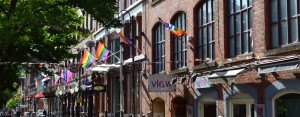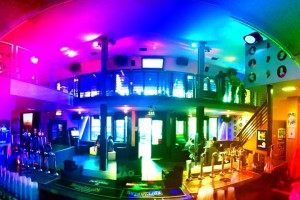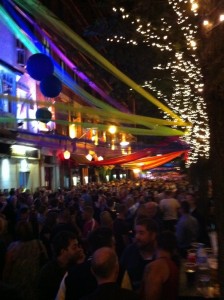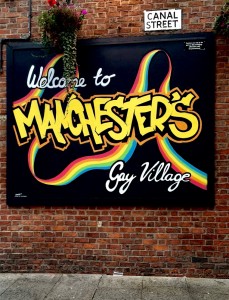Travel – Focus On – Manchester
Manchester’s Gay Scene
Canal Street
During the construction of the Rochdale Canal in 1804, Canal Street was built as part of the developing industrial area with cotton factories dominating its surroundings. Public houses and various other businesses were established to supply the needs of those working in the factories and the canal.
It wasn’t until the 20th century when the area became more associated with gay people.
By the 1960’s the cotton industry had collapsed leaving thousands of people across the north of England in poverty. Surviving in desperate conditions with social deprivation destroying whole communities, Canal Street became a red light district. This also provided an ideal place for gay men to anonymously meet, as the area became almost abandoned after dark. An extra bonus was, both Oxford Road and Manchester Piccadilly train stations were easily accessible.
In the 1980’s Greater Manchester Police were questioned about the policing of the Canal Street area as it was felt their actions were motivated by anti-gay prejudice. This was of course denied.
Manto Bar
In 1991 Manto (Manchester Tomorrow) bar opened. But Manto broke the mould from the other gay bars at that time. They installed large glass windows, allowing the people walking by to really see what was going on inside. Previously many venues, with a majority of their customers coming from the gay community felt it best to conceal their patrons socialising from the “outside world”. It is believed the visionary design of Manto was to make a visual statement “we’re here, we’re queer – get used to it”. A building which told the people of Manchester and beyond, we refuse to hide away any more and will no longer remain underground or invisible.
Thanks to the “coming out” expression of Manto, Canal Street flourished across the next decade. With larger bars and clubs opening as well as many more venues along the canal side, turning Canal Street into the centre of the most successful gay village in Europe.
As the global LGBT community has seen throughout time, everything changes and Canal Street is no different. With success also comes negativity and other issues, for the Manchester gay scene this meant more hen parties, students, an influx of friends and party goers of all sexualities, which sometimes creates trouble. Following the closure of Manto in October 2013 as well as a rise in antisocial behaviour and homophobic attacks, Canal Street has been forced once again to begin evolving, diversifying and focusing on the needs of the LGBT community.
The links below can be used to find further information on accommodation, bars, clubs, events, shops, etc.




